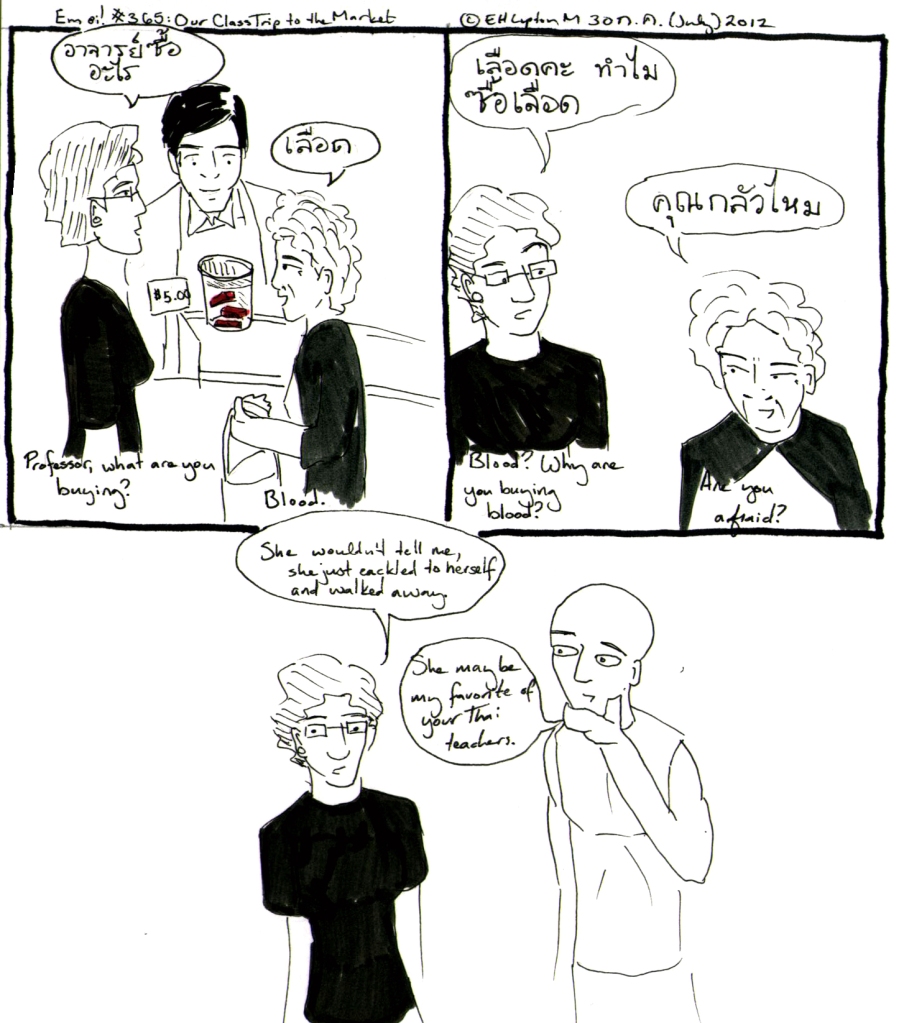This all happened at a place called “Việt Hoa Market.” To judge from the characters on the sign (as is not uncommon for Asian shops in the US generally, the sign is written in both Chinese and Vietnamese/English), the name means “Beautiful Vietnamese Market.” The Việt used is 越, meaning of course the country of Việt Nam. The hoa used is 華, meaning đẹp tốt (beautiful). Of course, why the market is called this in the first place is a bit confusing, since my Ajaan (professor) thought that the owners are Chinese…
Interestingly, the dipthong “-oa” is not one used in Thai (the Thai dipthongs are, I think, -ua, –ua, and -ia). This means that when my Thai professors pronounce the store name, they say “Viet Hua.” I guess -ie is close enough to -ia that it makes sense to their ears, but -oa is not? Of course the ODDEST part of the whole experience (beyond watching, you know, the purchase of blood) was finding myself pronouncing the store name “Viet Hua” DESPITE THE FACT that I speak Vietnamese and KNOW how it should be pronounced!
By the way, if you are wondering how I came up with the Chinese characters/Vietnamese pronunciation (i.e., chữ nôm), you must check out Cao Dai Tu Dien. It has never been entirely clear to me why the Cao Dai are maintaining a dictionary like this, but when you know a little Vietnamese and a little Chinese and want to put the two together, it is invaluable.
I’ll file this comic under: GN450.2 L86 2012, for Anthropology—Ethnology. Social and cultural anthropology—Cultural traits, customs, and institutions—Economic organization. Economic anthropology—Distribution of goods and services—Commerce and trade—Markets.
If you were curious, the blood looked almost exactly like I have drawn it: rectangles of a dark brown-red color suspended in a water-like liquid (possibly water). I have no idea what it was treated with to make it do that.

